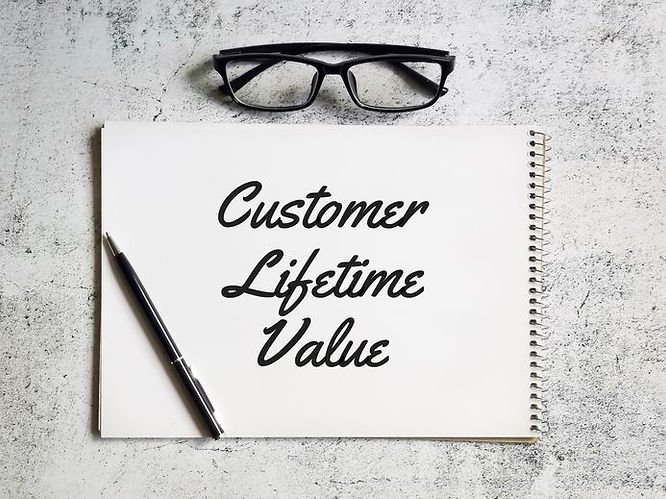Cross-selling and upselling are sales strategies used by e-commerce businesses to increase revenue, enhance customer experience, and promote customer loyalty. These strategies involve offering customers complementary products (cross-selling) or upgraded alternatives (upselling) that align with their needs and preferences.
Cross-selling and upselling are two effective sales strategies used by e-commerce businesses to maximize revenue, improve customer experience, and build customer loyalty. Implementing these strategies can lead to numerous benefits for both the business and the customer. Here are some key advantages of cross-selling and upselling in e-commerce.
10 benefits Of Cross-Selling And Upselling In E-Commerce
- Increased revenue and average order value: Cross-selling and upselling encourage customers to purchase additional items or higher-priced alternatives, leading to an increase in the average order value and overall revenue for the business.
- Enhanced customer experience: By recommending relevant and complementary products, e-commerce businesses can help customers discover products they might not have found otherwise, thus improving their shopping experience and satisfaction.
- Improved customer retention: Satisfied customers are more likely to return to the store for future purchases, resulting in higher customer retention and long-term revenue growth.
- Better inventory management: Cross-selling and upselling can help businesses move slow-selling or overstocked items by bundling them with popular products or offering them as add-ons.
- Increased customer lifetime value: By encouraging repeat purchases and fostering customer loyalty, cross-selling, and upselling contribute to higher customer lifetime value, which is a crucial metric for the long-term success of an e-commerce business.
- More efficient marketing: Cross-selling and upselling can help businesses gather valuable data about customer preferences and shopping habits, which can then be used to create personalized marketing campaigns and improve targeting.
- Strengthened brand perception: By offering customers high-quality complementary products and upgraded options, e-commerce businesses can strengthen their brand image and position themselves as a one-stop shop for their customers’ needs.
- Higher conversion rates: Relevant product recommendations and attractive upsell offers can increase the likelihood of customers completing a purchase, leading to higher conversion rates.
- Reduced cart abandonment: Offering complementary products or upgraded alternatives can give customers a more comprehensive shopping experience, which can lead to fewer instances of cart abandonment.
- Boosted customer engagement: Cross-selling and upselling can make the shopping experience more interactive and personalized, increasing customer engagement and satisfaction.
To maximize the benefits of cross-selling and upselling, e-commerce businesses should invest in data analysis, personalization, and targeted marketing efforts. By understanding their customers’ needs and preferences, businesses can create more effective product recommendations and upsell offers, leading to higher sales, improved customer satisfaction, and long-term business growth.
Increased Revenue And Average Order Value

Cross-selling and upselling are sales strategies that aim to maximize a business’s revenue by encouraging customers to purchase more items or higher-priced alternatives. Here’s how they contribute to increased revenue and average order value.
Cross-Selling
This strategy involves recommending complementary or related products to customers based on their current selection or past purchase behavior. For example, a customer purchasing a smartphone might be offered a protective case, screen protector, or wireless earbuds. By recommending relevant add-ons, e-commerce businesses can increase the number of items in a customer’s cart and, consequently, the total value of their purchase.
Upselling
This strategy focuses on offering customers a higher-priced alternative or an upgraded version of the product they are currently considering. For instance, a customer looking to buy a basic laptop might be presented with a more powerful and feature-rich model at a higher price. By showcasing the benefits of the upgraded option, businesses can encourage customers to spend more, resulting in a higher average order value.
Both cross-selling and upselling contribute to increased revenue by motivating customers to buy more or opt for more expensive items. This, in turn, leads to a higher average order value across all transactions, ultimately boosting the overall revenue for the e-commerce business. To be effective, these strategies should be implemented with a focus on personalization, relevance, and value addition, ensuring that customers find the recommendations genuinely helpful and appealing.
Enhanced Customer Experience

Enhancing the customer experience is a key benefit of cross-selling and upselling in e-commerce. By recommending relevant and complementary products, businesses can create a more personalized and enjoyable shopping journey for their customers. Here’s how this contributes to an enhanced customer experience.
Personalization
Cross-selling and upselling allow e-commerce businesses to tailor their recommendations based on customers’ preferences, browsing history, and purchase behavior. This creates a more personalized experience, as customers are presented with products that align with their interests and needs.
Convenience
By suggesting complementary products or upgraded alternatives, businesses can save customers time and effort in searching for additional items themselves. This added convenience makes the shopping process smoother and more enjoyable.
Discovery
Cross-selling and upselling can introduce customers to new products or product categories they might not have considered or found on their own. This not only broadens their shopping options but can also lead to the discovery of new favorites.
Informed Decision-Making
Presenting customers with relevant information and comparisons between products can help them make better-informed decisions about their purchases. This empowers customers and can lead to higher satisfaction with their final choices.
Confidence In Purchases
When businesses recommend products that complement or enhance the items customers are considering, it can give them confidence that they are making a well-rounded purchase. This can lead to increased satisfaction with the overall shopping experience.
By focusing on these aspects, e-commerce businesses can leverage cross-selling and upselling strategies to provide an enhanced customer experience. This, in turn, can lead to increased customer satisfaction, positive word-of-mouth, and higher customer retention rates – all of which are crucial for long-term success in the competitive e-commerce landscape.
Improved Customer Retention

Improved customer retention is a significant benefit of effectively implementing cross-selling and upselling strategies in e-commerce. When customers are satisfied with their shopping experience, they are more likely to return for future purchases, which leads to higher customer retention rates and long-term revenue growth. Here’s how cross-selling and upselling contribute to customer retention.
Meeting Customer Needs
By offering relevant and complementary products or upgraded alternatives, businesses demonstrate that they understand their customers’ needs and preferences. This helps to build trust and encourages customers to continue shopping with the same store.
Personalized Experience
Cross-selling and upselling create a more personalized shopping experience by recommending products based on customers’ interests and purchase history. This tailored approach can lead to higher customer satisfaction and loyalty.
Added Value
When customers feel they are getting good value from their purchases, whether through bundled offers, relevant add-ons, or upgrade options, they are more likely to return to the store for future shopping needs.
Post-Purchase Support
Upselling can also include offering extended warranties, premium support, or other after-sales services. By providing excellent post-purchase support, businesses can strengthen their relationship with customers and encourage repeat purchases.
Consistent Engagement
Cross-selling and upselling strategies can be employed in various customer touchpoints, such as email marketing, personalized recommendations, and retargeting ads. Consistent engagement across multiple channels helps to keep the brand top-of-mind and encourages customers to return.
Customer Satisfaction
When customers have a positive shopping experience, they are more likely to leave positive reviews and recommend the store to others. This positive word-of-mouth can help attract new customers and retain existing ones.
By focusing on customer satisfaction and offering a personalized, value-driven shopping experience, e-commerce businesses can improve customer retention rates. High customer retention rates lead to more repeat business, resulting in long-term revenue growth and a stronger competitive position in the market.
Better Inventory Management

Better inventory management is an essential benefit of implementing cross-selling and upselling strategies in e-commerce. By effectively using these tactics, businesses can optimize their inventory levels, reduce carrying costs, and ensure efficient use of resources. Here’s how cross-selling and upselling can help move slow-selling or overstocked items.
Product Bundling
Businesses can create product bundles that combine slow-moving items with popular, high-demand products. By offering these bundles at a discounted rate or presenting them as a value-added package, customers are more likely to purchase the slow-selling items along with the popular ones.
Promotional Add-Ons
E-commerce businesses can offer slow-selling or overstocked items as add-ons or accessories to complement primary products. For example, a store could offer a free or discounted slow-moving accessory when a customer purchases a popular product.
Upgraded Bundles
Upselling can be used to create packages that include slow-selling items as part of an upgraded or premium offering. By highlighting the added value and benefits of the upgraded bundle, customers may be more inclined to choose the higher-priced option, which can help move the slow-selling inventory.
Personalized Recommendations
By using customer data and analytics, businesses can identify which customers are most likely to be interested in slow-moving or overstocked items. These items can then be recommended as cross-sell or upsell opportunities, helping to target the right customers and increase the likelihood of a sale.
Limited-Time Offers
Creating limited-time offers or flash sales for slow-selling or overstocked items can create a sense of urgency and encourage customers to make a purchase. These promotions can be combined with cross-selling and upselling strategies to further increase the chances of selling these items.
Seasonal Campaigns
If slow-moving or overstocked items are seasonal, businesses can leverage cross-selling and upselling techniques during relevant seasons or holidays to promote these products more effectively.
By implementing cross-selling and upselling strategies to better manage inventory, e-commerce businesses can reduce costs associated with holding excess inventory, improve cash flow, and optimize warehouse space. This can lead to increased operational efficiency and profitability in the long run.
Increased Customer Lifetime Value

Increased customer lifetime value (CLV) is a significant benefit of effectively implementing cross-selling and upselling strategies in e-commerce. CLV represents the total revenue a business can expect to generate from a single customer throughout its relationship. Encouraging repeat purchases and fostering customer loyalty, cross-selling, and upselling can have a positive impact on CLV and contribute to the long-term success of an e-commerce business. Here’s how these strategies help increase CLV.
Personalization
Cross-selling and upselling create a more personalized shopping experience by offering relevant product recommendations based on customers’ interests, purchase history, and browsing behavior. This tailored approach can lead to higher customer satisfaction and loyalty, which ultimately results in increased CLV.
Value Addition
By offering complementary products or upgraded alternatives, businesses provide additional value to customers, which can encourage them to make repeat purchases and remain loyal to the brand.
Enhanced Customer Experience
As customers discover new products and enjoy a more convenient shopping experience through cross-selling and upselling, their overall satisfaction with the brand increases. This heightened satisfaction can lead to higher customer retention rates, which in turn contribute to increased CLV.
Positive Word-Of-Mouth
Satisfied customers are more likely to recommend a brand to their friends and family, attracting new customers and helping to retain existing ones. This positive word-of-mouth can lead to a larger and more loyal customer base, which ultimately results in a higher CLV.
Data-Driven Marketing
By analyzing customer data obtained through cross-selling and upselling activities, businesses can create more targeted marketing campaigns, tailored offers, and personalized experiences. This data-driven approach can lead to higher conversion rates, more repeat purchases, and a larger share of wallet from each customer, all contributing to an increased CLV.
Post-Purchase Support
Upselling can also include offering extended warranties, premium support, or other after-sales services. By providing excellent post-purchase support, businesses can strengthen their relationship with customers and encourage repeat purchases, leading to a higher CLV.
By focusing on customer satisfaction, personalization, and value addition, e-commerce businesses can leverage cross-selling and upselling strategies to increase customer lifetime value. A higher CLV not only results in more sustainable revenue growth but also strengthens the competitive position of the business in the ever-evolving e-commerce landscape.
More Efficient Marketing

More efficient marketing is a significant benefit of implementing cross-selling and upselling strategies in e-commerce. These strategies can help businesses gather valuable data about customer preferences, shopping habits, and purchase history, enabling them to create personalized marketing campaigns and improve targeting. Here’s how cross-selling and upselling contribute to more efficient marketing.
Data Collection
As customers interact with cross-sell and upsell recommendations, businesses can gather data on their preferences, interests, and buying patterns. This data can be used to segment customers and better understand their needs and desires.
Personalized Campaigns
By using the collected data, businesses can create personalized marketing campaigns that target specific customer segments with relevant offers, promotions, and product recommendations. This tailored approach increases the likelihood of conversion and engagement, making marketing efforts more efficient.
Improved Targeting
With a deeper understanding of customer preferences and habits, e-commerce businesses can improve targeting by focusing their marketing efforts on the most profitable customer segments or those most likely to convert.
Dynamic Content
Cross-selling and upselling data can be used to create dynamic content, such as personalized email campaigns, retargeting ads, or on-site recommendations, which adapt based on individual customer behavior. This dynamic approach ensures that marketing messages remain relevant and engaging.
Enhanced Customer Journey
By utilizing cross-selling and upselling data, businesses can optimize the customer journey, ensuring that marketing touchpoints are relevant and timely. This helps to guide customers through the sales funnel more effectively, resulting in higher conversion rates and increased revenue.
Reduced Marketing Costs
More efficient marketing driven by cross-selling and upselling data can lead to lower customer acquisition costs and increased return on investment (ROI). By targeting the right customers with the right messages, businesses can reduce wasteful marketing spend and improve overall marketing efficiency.
In conclusion, cross-selling and upselling strategies not only help increase revenue but also contribute to more efficient marketing efforts. By gathering valuable customer data and leveraging it to create personalized, targeted campaigns, e-commerce businesses can improve the effectiveness of their marketing initiatives, resulting in higher conversion rates, increased customer engagement, and long-term revenue growth.
Strengthened Brand Perception

Strengthened brand perception is another important benefit of effectively implementing cross-selling and upselling strategies in e-commerce. By offering customers high-quality complementary products and upgraded options, businesses can improve their brand image and position themselves as a one-stop shop for their customers’ needs. Here’s how cross-selling and upselling contribute to strengthening brand perception.
Enhanced Reputation
Offering a wide range of complementary products and upgraded options demonstrates the business’s commitment to catering to customers’ diverse needs. This can help to establish the brand as a reliable and trustworthy source for various products, enhancing its overall reputation.
Expertise And Authority
When a business can effectively recommend relevant, complementary products or upgraded alternatives, it showcases its expertise and understanding of the industry, product categories, and customer needs. This can help to position the brand as an authority in its niche, further strengthening its image.
Customer Satisfaction
As customers enjoy a more personalized and convenient shopping experience through cross-selling and upselling, their satisfaction with the brand increases. Satisfied customers are more likely to leave positive reviews, recommend the brand to others, and become brand advocates, all of which contribute to a stronger brand perception.
Value-Driven Approach
By offering customers value-added bundles, upgraded options, or relevant add-ons, businesses show that they prioritize providing value to their customers. This value-driven approach can help to differentiate the brand from competitors and create a positive brand image.
Consistency And Cohesion
Cross-selling and upselling can help to create a more cohesive and consistent customer experience by ensuring that the products and services offered align with the brand’s overall messaging and positioning. This consistency can lead to a stronger brand identity and improved customer perception.
Higher Perceived Quality
By offering high-quality complementary products and upgraded options, e-commerce businesses can create an association between their brand and quality in the minds of their customers. This can lead to a higher perceived quality of the brand and its offerings, further strengthening brand perception.
In summary, cross-selling and upselling strategies play a crucial role in strengthening a brand’s perception in the highly competitive e-commerce landscape. By offering customers high-quality complementary products, upgraded options, and a personalized shopping experience, businesses can improve their brand image and foster long-term customer loyalty.
Higher Conversion Rates

Higher conversion rates are a key benefit of effectively implementing cross-selling and upselling strategies in e-commerce. By providing relevant product recommendations and attractive upsell offers, businesses can increase the likelihood of customers completing a purchase, ultimately resulting in higher conversion rates. Here’s how cross-selling and upselling contribute to higher conversion rates.
Personalization
Offering personalized product recommendations based on a customer’s interests, browsing history, or past purchases increases the chances of them finding something they like and want to buy, leading to a higher likelihood of conversion.
Relevance
Cross-selling and upselling strategies that focus on recommending relevant and complementary products can capture customers’ attention and make it easier for them to find items that fit their needs, increasing the probability of a purchase.
Value Proposition
By presenting attractive upsell offers that highlight the benefits and value of upgrading to a higher-priced product or bundle, customers may be more inclined to opt for the more expensive option, resulting in increased conversions.
Convenience
Cross-selling and upselling simplify the shopping process by suggesting additional items or upgraded alternatives that customers might not have considered otherwise. This added convenience can encourage customers to complete their purchases and increase conversion rates.
FOMO (Fear of Missing Out)
Limited-time offers or exclusive deals presented as part of cross-selling and upselling strategies can create a sense of urgency, motivating customers to purchase before the opportunity is gone, leading to higher conversions.
Improved Decision-Making
By offering side-by-side comparisons, detailed information, or customer reviews as part of upselling tactics, businesses can help customers make more informed decisions about their purchases. This empowerment can lead to increased satisfaction with their choices and higher conversion rates.
Reduced Cart Abandonment
Effective cross-selling and upselling strategies can help address common reasons for cart abandonment, such as high shipping costs or lack of perceived value. By offering bundles, discounts, or free shipping as part of cross-selling or upselling offers, businesses can encourage customers to complete their transactions and reduce cart abandonment rates.
By focusing on personalization, relevance, and value addition, e-commerce businesses can leverage cross-selling and upselling strategies to achieve higher conversion rates. Higher conversion rates not only result in increased revenue but also contribute to the overall success and growth of the business in the competitive e-commerce market.
Reduced Cart Abandonment

Reduced cart abandonment is another notable benefit of effectively implementing cross-selling and upselling strategies in e-commerce. By offering complementary products or upgraded alternatives, businesses can provide customers with a more comprehensive shopping experience, ultimately leading to fewer instances of cart abandonment. Here’s how cross-selling and upselling can help reduce cart abandonment.
Increased Perceived Value
Cross-selling and upselling strategies can enhance the perceived value of a customer’s purchase by offering complementary items, bundles, or upgraded options. This can encourage customers to complete their purchases, reducing the chances of cart abandonment.
Convenience
By suggesting relevant and complementary products or upgraded alternatives, businesses can make the shopping process more convenient for customers. This can help them find everything they need in one place, making them more likely to complete their purchases and reducing cart abandonment.
Better-Informed Decisions
Cross-selling and upselling can provide customers with additional information, comparisons, or customer reviews that help them make more informed purchase decisions. This can lead to increased satisfaction with their choices and a higher likelihood of completing the transaction.
Overcoming Objections
Effective cross-selling and upselling strategies can help address common objections that lead to cart abandonment, such as high shipping costs or a perceived lack of value. By offering special deals, free shipping, or other incentives as part of cross-selling or upselling offers, businesses can encourage customers to complete their purchases.
Improved Customer Engagement
Cross-selling and upselling can create a more engaging shopping experience, capturing customers’ attention and keeping them interested in the products and offers presented. This increased engagement can make customers more likely to complete their transactions, reducing cart abandonment rates.
Optimized Checkout Process
Cross-selling and upselling opportunities can be integrated into the checkout process, ensuring that customers have a chance to review and consider additional items or upgraded options before finalizing their purchases. This can help to address last-minute objections and encourage customers to complete their transactions, resulting in reduced cart abandonment.
By focusing on providing a comprehensive and engaging shopping experience through cross-selling and upselling strategies, e-commerce businesses can reduce cart abandonment rates. This not only leads to increased revenue but also contributes to the overall success and growth of the business in a competitive market to become a market leader.
Boosted Customer Engagement

Boosted customer engagement is a valuable benefit of implementing cross-selling and upselling strategies in e-commerce. By making the shopping experience more interactive and personalized, these strategies can increase customer engagement and satisfaction. Here’s how cross-selling and upselling contribute to boosted customer engagement.
Personalized Recommendations
Cross-selling and upselling strategies that use customer data to offer personalized product recommendations based on browsing history, past purchases, or interests can create a more engaging and tailored shopping experience.
Interactive Content
By incorporating interactive content, such as product comparison tools, quizzes, or chatbots, businesses can engage customers more effectively and provide them with relevant cross-selling and upselling opportunities.
Dynamic On-Site Recommendations
E-commerce businesses can leverage dynamic on-site recommendations that change based on customer behavior, creating a more engaging and personalized experience. This can help capture customers’ attention and encourage them to explore additional products or upgraded alternatives.
Customized Email Campaigns
Businesses can use cross-selling and upselling strategies in their email campaigns to provide customers with personalized offers, promotions, and product recommendations. This targeted approach can help to increase customer engagement and drive repeat purchases.
Social Media Integration
Integrating cross-selling and upselling strategies into social media platforms can help businesses reach customers where they are already engaged, providing them with relevant product suggestions and offers that can spark interest and drive conversions.
Gamification
Incorporating gamification elements, such as rewards, points, or exclusive offers, into cross-selling and upselling strategies can create a more engaging and enjoyable shopping experience, encouraging customers to explore additional products and make repeat purchases.
Storytelling And Context
Presenting cross-selling and upselling opportunities within a narrative or contextual framework can help customers better understand the value and relevance of the recommended products, making the shopping experience more engaging and persuasive.
By focusing on personalization, interactivity, and dynamic content, e-commerce businesses can leverage cross-selling and upselling strategies to boost customer engagement. Increased customer engagement not only contributes to a more satisfying shopping experience but also helps to drive repeat purchases, foster brand loyalty, and promote long-term revenue growth.
In conclusion, cross-selling and upselling strategies are essential components of a successful e-commerce business. By offering relevant and personalized product recommendations, businesses can not only increase revenue and average order value but also create a more engaging and satisfying shopping experience for their customers. These strategies lead to improved customer retention, more efficient marketing, and a stronger brand perception, all of which contribute to long-term success and growth. By embracing cross-selling and upselling, e-commerce businesses can better meet their customers’ needs, boost conversions, and reduce cart abandonment, ultimately fostering customer loyalty and driving sustainable competitive advantage in the ever-evolving digital landscape. You can learn about another strategy with us.

